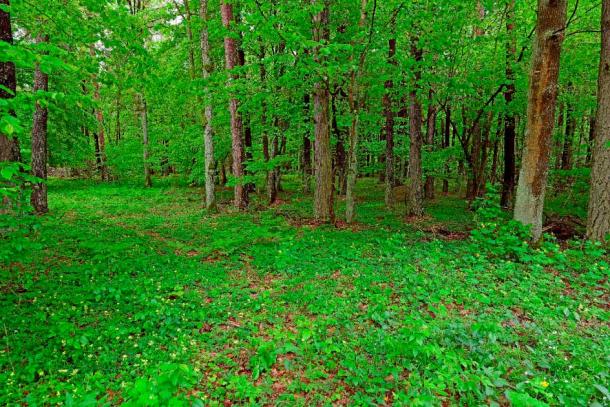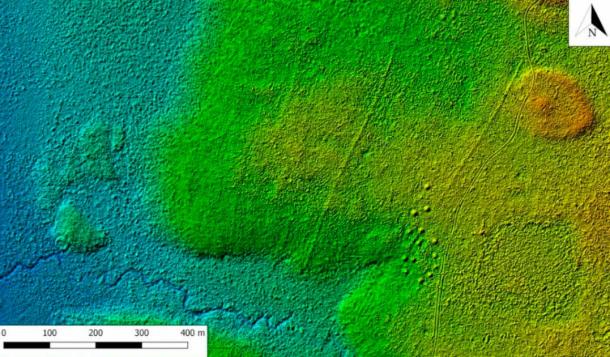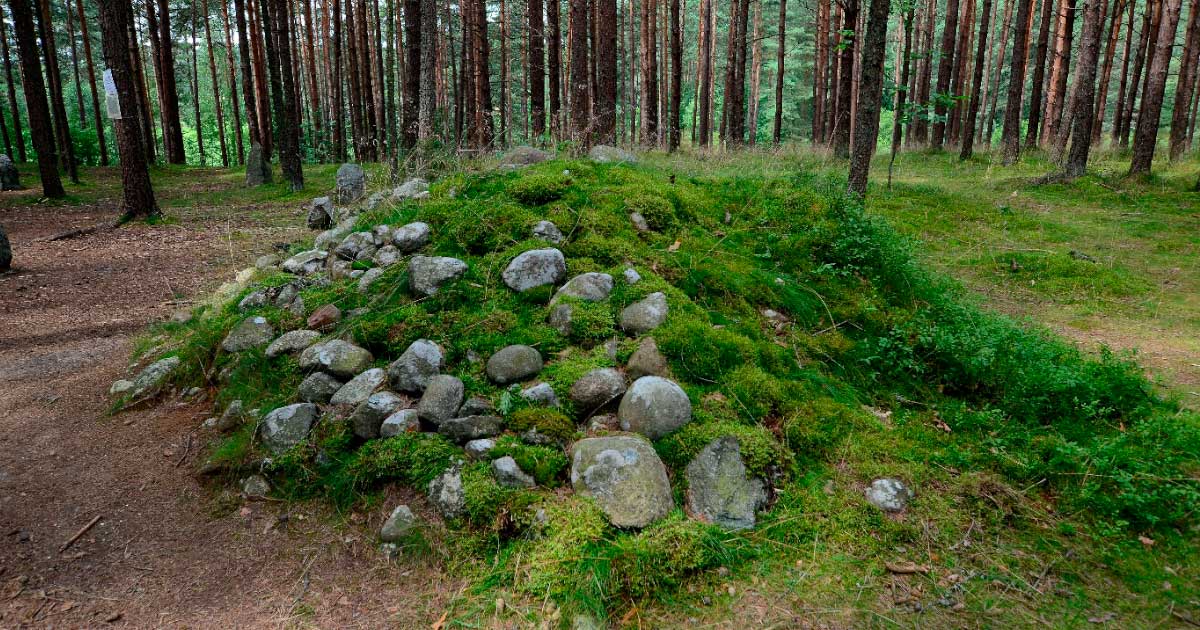Over 800 Ancient Monuments Found in Polish Forest with LiDAR!
One of the last primeval forests in Europe, Białowieża forest in Poland, is the subject of a fascinating new LiDAR (Light Detection and Ranging) survey. It has yielded a vast and incredible array of hidden treasures from prehistory all the way up until World War II, including 577 ancient burial barrows, 246 charcoal kiln sites, 54 tar plants, 19 complexes of ancient farmlands, 51 semi-dugouts and 17 war cemeteries.
Some of the mounds are dated to the early Middle Ages, but most are from the Roman period, i.e., 2nd – 5th century AD. In total, the 800+ ancient monuments are of various functions, as explained by the team of scientists and archaeologists from the Institute of Archaeology of the Cardinal Stefan Wyszynski University (IA UKSW) in Warsaw.
The project was headed by Prof. Przemysław Urbańczyk. They have brought to a close a lengthy 5 year research project of the Polish half of the Białowieża Forest, which lies on the border with Belarus, reports PAP. The research has been funded by the National Science Center of Poland.
- LIDAR Identifies Vast Complexes Of A Lost Amazonian Civilization in Bolivia
- LiDAR Tech Unearths “Supertantalizing” Hidden Tikal Architecture

Białowieża Forest in Poland (bennytrapp / Adobe Stock)
LiDAR and Determining the Functionality of Mounds
"Thanks to the use of innovative research methods, combined with numerous natural analyzes, we have obtained, despite the initial pessimism, amazing results”, the main project coordinator, Dr. Joanna Wawrzeniek from the IA UKSW told PAP. “In accordance with the current conservation doctrine, we mainly used non-invasive tests. The output information was provided by aerial laser scanning,” she added.
Aerial laser scanning is a highly efficient non-invasive research method, that allows for a comfortable bypassing of the need for archaeological excavations, by allowing a top-down view of the topography. Dense forests and tough terrain do not act as a hindrance and allow for all kinds of structures to be seen and identified – natural and human-made (like burial structures and mounds for example).
The purpose of the ancient barrows in the Polish forest is not certain, but they are thought to be burial mounds. This is where LiDAR’s efficiency draws a line. Therefore, archival queries, geophysical surveys, drilling, and survey research methods were also employed.
Mounds from the Middle Ages contained skeleton and cremation burials, but the ones from the ancient periods lacked human remains, reports Heritage Daily and may have been ritualistic .

Some of the ancient structures spotted with LiDAR in Białowieża Forest in Poland (M. Szubski, M. Jakubczak)
Occupation Through Time
Earlier on in pre-history, people inhabited the forest on small elevations that had access to a river or a stream, which could be places inhabited for a long time. Evidence of habitation is also gained from two structures, first of which is located in the Strict Reserve of the Białowieża National Park, and the other is in the Wilczy Jar Forest District.
They did not play a defensive role, or act as strongholds, but are more likely to have played some kind of ritualistic role. Only archaeological excavations can provide insight into what this ritualistic role potentially could be.
The first structure that was examined has a diameter of 36 meters (118.1 feet), with a small embankment that is 3 meters (9.8 feet) wide. From this structure, Slavic pottery from the early and late Middle Ages was found, along with ancient flint relics. The second structure was less than half of the first in diameter – 17 meters (55.77 feet). Here, there is evidence of the site being used in two distinct periods – first in prehistory (4th-3rd century BC), and the second from the 7 th-10th century AD.
The second structure had, alongside it, a compact pavement, a shallow pit, and traces of a dowel discovered on the embankment. Also found was the fragment of a courtyard, with lightly burned animal bones in the vicinity. It also possessed a vessel from the Roman period, though there was no other proof of occupation from the Roman period.
Further publications are planned, which will describe the results of this exciting archaeological research, and with over 800 monuments discovered, there is still much to be revealed!
Top image: An ancient burial mound in Poland, Tumuli in Wesiory (representational image). Artur Henryk / Adobe Stock
By Sahir Pandey
References
Heritage Daily. 2022. LIDAR REVEALS LOST LANDSCAPE CONTAINING HUNDREDS OF ANCIENT MONUMENTS. Available at: https://www.heritagedaily.com/2022/10/lidar-reveals-lost-landscape-containing-hundreds-of-ancient-monuments/144917.
GIS. 2022. Aerial scanning reveals the old face of the Białowieża Primeval Forest. Available at: https://geoforum.pl/news/33003/lotniczy-skaning-odkrywa-dawne-oblicze-puszczy-bialowieskiej.
Zdziebłowski, S. 2022. Archaeological research in the Białowieża Primeval Forest: hundreds of mounds and traces of ancient fields. Available at: https://naukawpolsce.pl/aktualnosci/news%2C93919%2Cbadania-archeologow-w-puszczy-bialowieskiej-setki-kurhanow-i-slady-po.


















Comments
Wonder u they haven't lidared the sphinx and proven that thoths chambers exist
infinitesimal waveparticles comprise what we call home the earth
manipulatable by thought ability supressed in humans since birth